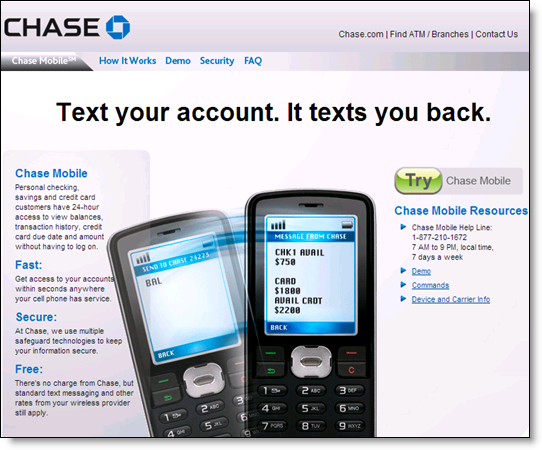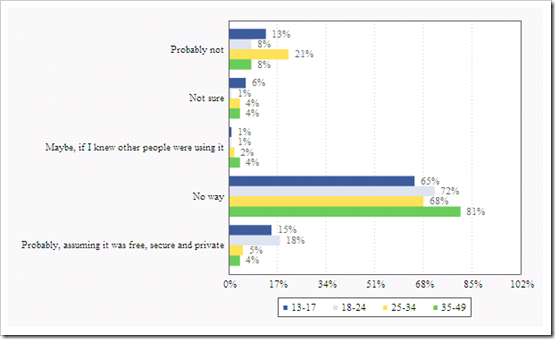 In its latest quarterly financial results (here), Bank of America said it signed up 224,000 new users during the quarter to bring its active mobile banking base to 840,000. Assuming the 75,000/mo pace continues through second quarter, the bank should be over 900,000 now and will surpass 1 million in the next few weeks.
In its latest quarterly financial results (here), Bank of America said it signed up 224,000 new users during the quarter to bring its active mobile banking base to 840,000. Assuming the 75,000/mo pace continues through second quarter, the bank should be over 900,000 now and will surpass 1 million in the next few weeks.
Although it’s a nice milestone, it’s only 4% of the bank’s 23+million active online banking users (here). Given that mobile is pushed frequently in the bank’s online banking area, one could argue that 4% adoption is pretty anemic. But according to M:Metrics, less than 14% of U.S. mobile phone users accessed info via the mobile Web in February. So 4% of a 14% universe is much more impressive, indicating the bank has tapped almost 1/3 of the short-term potential for mobile Web-based services, a good start.
To really goose adoption, text-based solutions may need more emphasis (see Chase screenshot below). According to M:Metrics, U.S. text users outnumbered mobile Web users almost 4 to 1 in February, 110 million to 30 million.
Industry forecast update
These adoption rates are about what we expected. In the forecast published a year ago in our Online Banking Report on Mobile Banking, we were relatively bearish short term, projecting 900,000 mobile users by year-end 2007 growing to 2.5 million by the end of 2008.
With BofA reporting 840,000 and assuming they have about half of all users, the U.S. market has likely already passed the 1.5 million mark and will end the year at more than 3 million.
The adoption rate depends on how hard banks push mobile options. Along with BofA, Chase has been one of the most aggressive, showing mobile use in its advertising for several years now (previous coverage here). I love its “Text your account. It texts you back.” Just seven words conveying more than most 3-minute demos.














